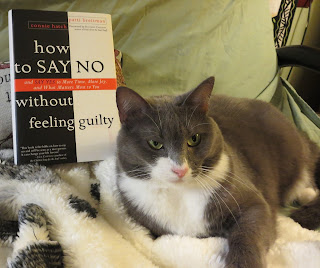Reviewed by Ambrea
Quentin
Jacobsen fell in love with Margo when they were both nine years old, and he has
spent an entire lifetime loving from afar the magnificent and adventurous girl
known as Margo Roth Spiegelman. Then,
one night, Margo appears at his window.
Dressed like a ninja and harboring a rather inspired plan for vengeance,
Margo pulls Quentin into an adventure the likes of which he’s never experienced—a
night that he’ll never soon forget.
When
Quentin arrives at school the next morning, he finds that Margo has
disappeared: she loved mysteries so
much, she finally became one. But
Quentin learns that Margo left clues behind—a poster in her window, a
highlighted passage in a poem, a vinyl record—which leads him down a winding
path to graduation and beyond, a path that will ultimately lead him to an
answer he didn’t foresee.
I
liked Paper Towns, and I absolutely
loved Quentin.
Quentin
is a good person: he tries his best at
school, he has a good group of friends, he has a great relationship with his
parents, and he has plans for his future.
And I like him precisely because he is
a good person. Granted, he’s not
infallible and he certainly isn’t perfect, but he’s a good person and he’s
trying his hardest to be a good friend.
Quentin
also has a unique voice. Like all
narrators in John Green’s books—Miles in Looking
for Alaska, Hazel from The Fault in
Our Stars, Colin from An Abundance of
Katherines—Quentin is a gifted storyteller and narrator. He’s smart and thoughtful, making connections
and finding clues from Margo that no one else managed to find, let alone
decipher, and he’s an enjoyable narrator.
He’s intelligent and introspective; he’s precise and clear.
He
is the type of narrator who manages to ensnare me in his story, precisely
because he knows how to tell his story.
He knows how to keep me involved in the journey—and I was enthralled the
entire time.
However,
I found I was considerably disappointed with Margo Roth Spiegelman. Although my impression of Margo was colored
by Quentin’s adoration , I had a sinking suspicion as I read Paper Towns that she was not the wild,
adventurous and amazing girl he—and, well, everyone else—considered her to be.
And,
unfortunately, I was right.
I
know why Quentin had to pursue Margo: it
was a personal journey, a quest for self-discovery. I also know why Quentin had to destroy his
image of Margo by finally meeting the real
Margo. Margo on paper is much different
than Margo in real life, and Quentin had to have that misconception
destroyed—like us, like the readers.
But
I found the conclusion of Paper Towns
was a bit more anticlimactic than I expected.
I mean, perhaps I had unrealistic expectations, like Quentin did, or
perhaps I’ve been corrupted by traditional literature which allows for such unrealistic
expectations. Regardless, I was slightly
disappointed.
I
understand why John Green concluded Paper
Towns as he did. I see why he had to
destroy Quentin’s—and, by proxy, my—understanding
of and expectations for Margo. She
became a mirror, like Quentin discovers, reflecting the thoughts and ideas and
feelings of all those who knew her (including readers), and Green had to
shatter that mirror in order for us to see the real Margo.
I
understand; however, I could have finished Green’s novel without ever finding
out what really happened to Margo Roth Spiegelman. It would have spared me the heartache.








